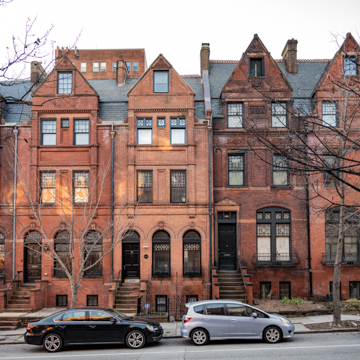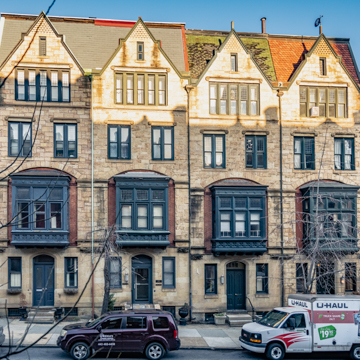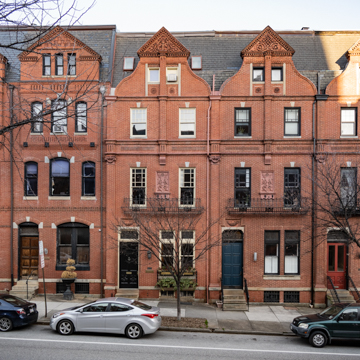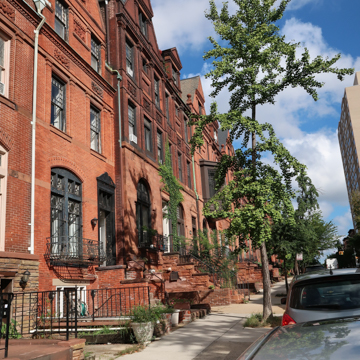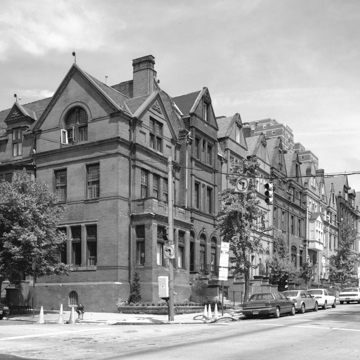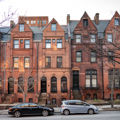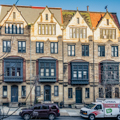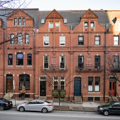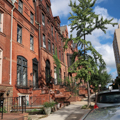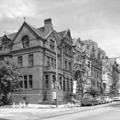One of the most admired row house blocks in Baltimore, Belvidere Terrace represents an early and exuberant use of Queen Anne architecture. Completed first, the east side was designed by local architects John Appleton Wilson and his partner and cousin, William T. Wilson. The former is credited with introducing the picturesque Queen Anne style to Baltimore, with one of his first designs for the Catherine McKim House (1879; 1037 N. Calvert). McKim then hired them to design the adjacent grouping of fifteen unified row houses.
Once those row houses were completed, the family hired Wyatt and Sperry to design an even more eclectic grouping of twenty-two row houses along the west side of Calvert Street. While they differ in design from the previous units, they maintain the overall form and scale, adopting many of the same materials and architectural motifs. Together, Belvidere Terrace represents the best of Baltimore’s late-nineteenth-century eclecticism, exhibiting a riot of forms and textures to include pressed and molded brick and foliated spandrels in terracotta with contrasting marble, granite, and pressed-metal details, ornamental gables, Romanesque arches, and multipaned windows.






















